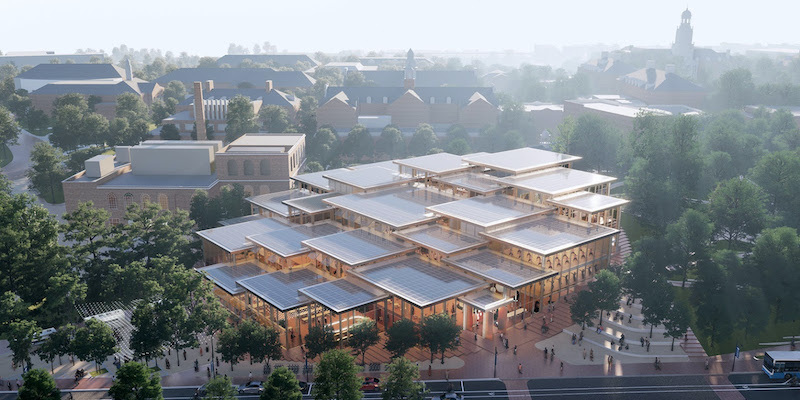BIG has been selected by Johns Hopkins University to design the Hopkins Student Center, or ‘The Village.’ The project will be an open, modern, welcoming facility that will act as a social engagement hub for all members of the Hopkins community.
The 150,000-sf building will include spaces for relaxation and socialization, creative and performing arts spaces, student resources and support spaces, lounges, a digital media center, a performance space with seating for 200 people, and a dining hall that connects directly to a new plaza along Charles Street.
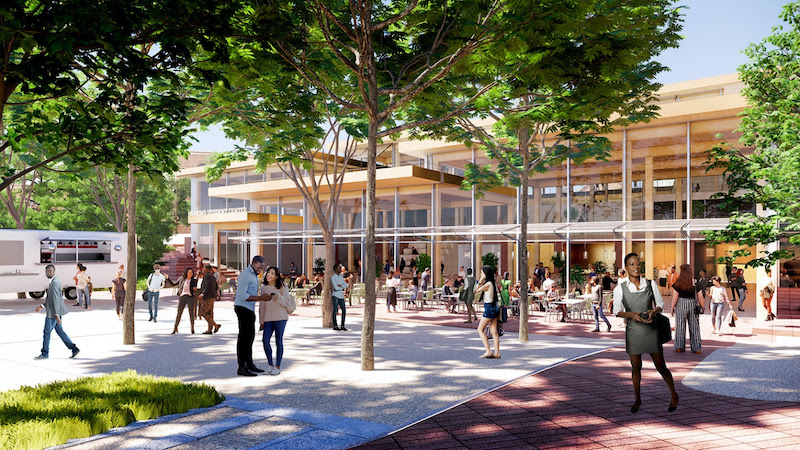
The Village will be strategically located on campus at the intersection of 33rd and Charles Streets and is conceived as a central living room surrounded by a collection of spaces tailored to the needs of the Hopkins community. It will turn the area into a hub that acts as a natural gateway connecting Charles Village and more than 3,500 Hopkins students who live in the neighborhood, to the heart of the Homewood campus.
Upon entering The Village, visitors will be met with a cascading interior landscape of dining, performance, lounging, and socializing. The mass timber structure will provide a warm and acoustically comfortable environment filled with natural light that filters between photovoltaic roof panels.
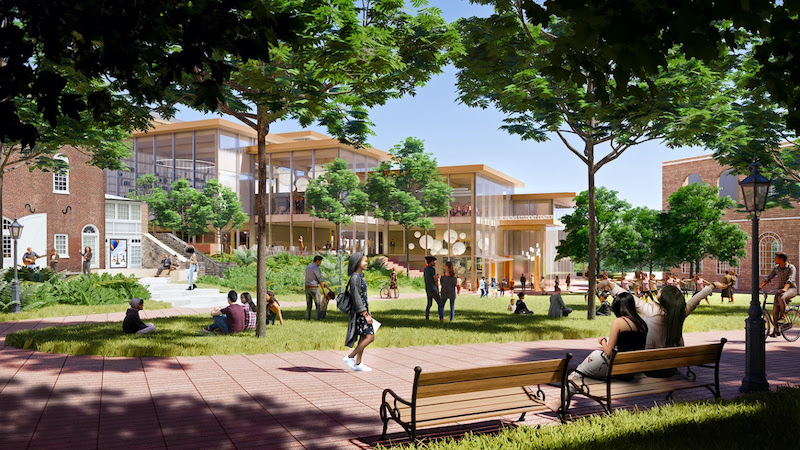
The interior landscape comprises a cluster of flexible spaces that open out on to four rejuvenated public spaces: an events-focused commons, the shaded paths of the Grove, an entry plaza at 33rd Street, and a new food market and plaza to the south. A new central plaza will also be included that can host pop-up exhibits or performances, vendors, and food trucks.
The Hopkins Student Center is set to begin construction in spring 2022 and is slated for completion by fall 2024. BIG is teaming with Shepley Bulfinch (Architect of Record), Rockwell Group (interior design), and Michael Van Valkenburg Associates (landscape design) on the project.
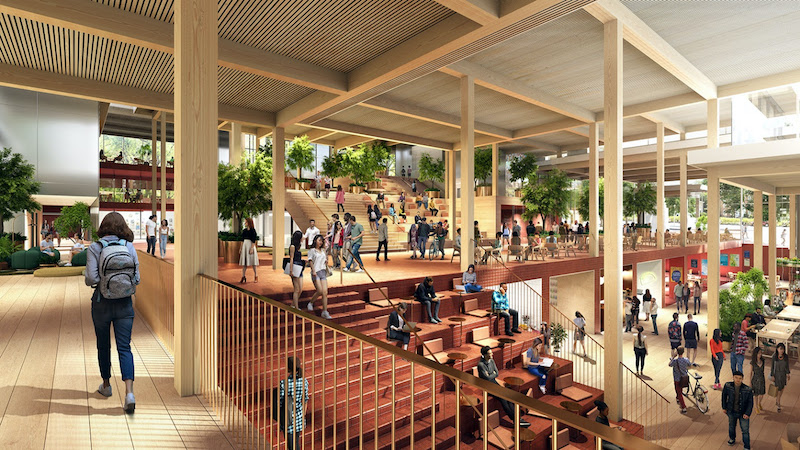
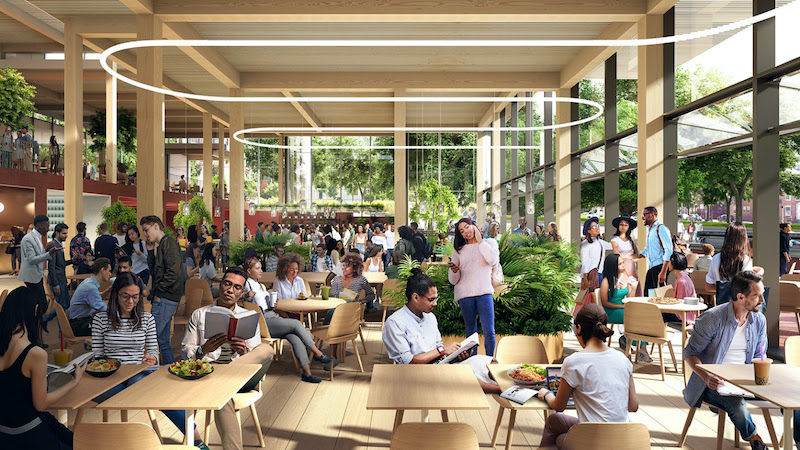
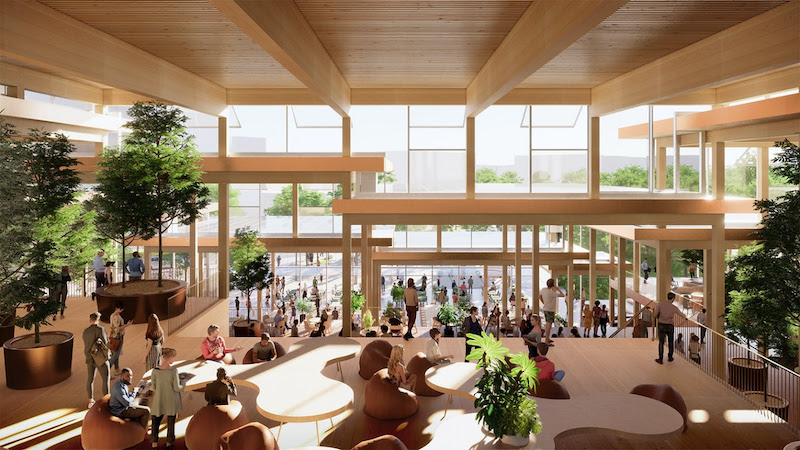

Related Stories
| Oct 17, 2011
Clery Act report reveals community colleges lacking integrated mass notification systems
“Detailed Analysis of U.S. College and University Annual Clery Act Reports” study now available.
| Oct 14, 2011
University of New Mexico Science & Math Learning Center attains LEED for Schools Gold
Van H. Gilbert architects enhances sustainability credentials.
| Oct 12, 2011
Bulley & Andrews celebrates 120 years of construction
The family-owned and operated general contractor attributes this significant milestone to the strong foundation built decades ago on honesty, integrity, and service in construction.
| Sep 30, 2011
Design your own floor program
Program allows users to choose from a variety of flooring and line accent colors to create unique floor designs to complement any athletic facility.
| Sep 23, 2011
Okanagan College sets sights on Living Buildings Challenge
The Living Building Challenge requires projects to meet a stringent list of qualifications, including net-zero energy and water consumption, and address critical environmental, social and economic factors.
| Sep 14, 2011
Research shows large gap in safety focus
82% of public, private and 2-year specialized colleges and universities believe they are not very effective at managing safe and secure openings or identities.
| Sep 7, 2011
KSS Architects wins AIA NJ design award
The project was one of three to win the award in the category of Architectural/Non-Residential.
| May 18, 2011
Major Trends in University Residence Halls
They’re not ‘dorms’ anymore. Today’s collegiate housing facilities are lively, state-of-the-art, and green—and a growing sector for Building Teams to explore.
| May 18, 2011
Raphael Viñoly’s serpentine-shaped building snakes up San Francisco hillside
The hillside location for the Ray and Dagmar Dolby Regeneration Medicine building at the University of California, San Francisco, presented a challenge to the Building Team of Raphael Viñoly, SmithGroup, DPR Construction, and Forell/Elsesser Engineers. The 660-foot-long serpentine-shaped building sits on a structural framework 40 to 70 feet off the ground to accommodate the hillside’s steep 60-degree slope.


